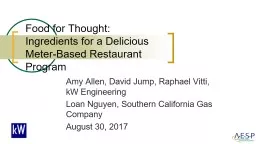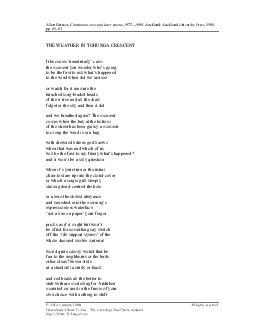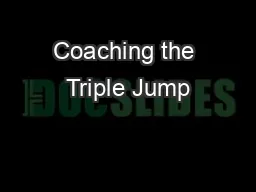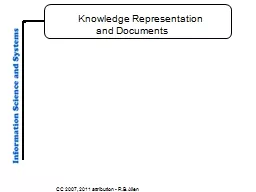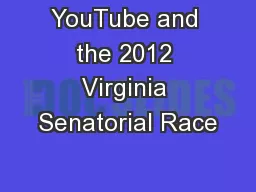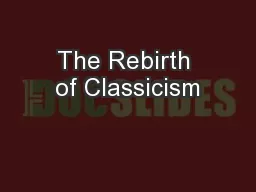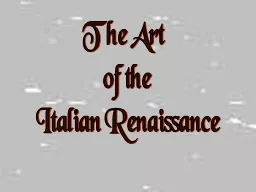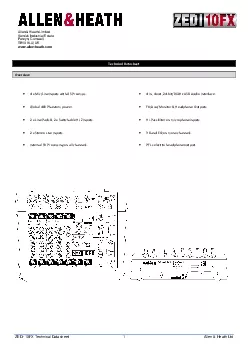PPT-Amy Allen, David Jump, Raphael Vitti, kW Engineering
Author : min-jolicoeur | Published Date : 2018-03-10
Loan Nguyen Southern California Gas Company August 30 2017 Food for Thought Ingredients for a Delicious MeterBased Restaurant Program Agenda Introduction Approach
Presentation Embed Code
Download Presentation
Download Presentation The PPT/PDF document "Amy Allen, David Jump, Raphael Vitti, kW..." is the property of its rightful owner. Permission is granted to download and print the materials on this website for personal, non-commercial use only, and to display it on your personal computer provided you do not modify the materials and that you retain all copyright notices contained in the materials. By downloading content from our website, you accept the terms of this agreement.
Amy Allen, David Jump, Raphael Vitti, kW Engineering: Transcript
Download Rules Of Document
"Amy Allen, David Jump, Raphael Vitti, kW Engineering"The content belongs to its owner. You may download and print it for personal use, without modification, and keep all copyright notices. By downloading, you agree to these terms.
Related Documents

